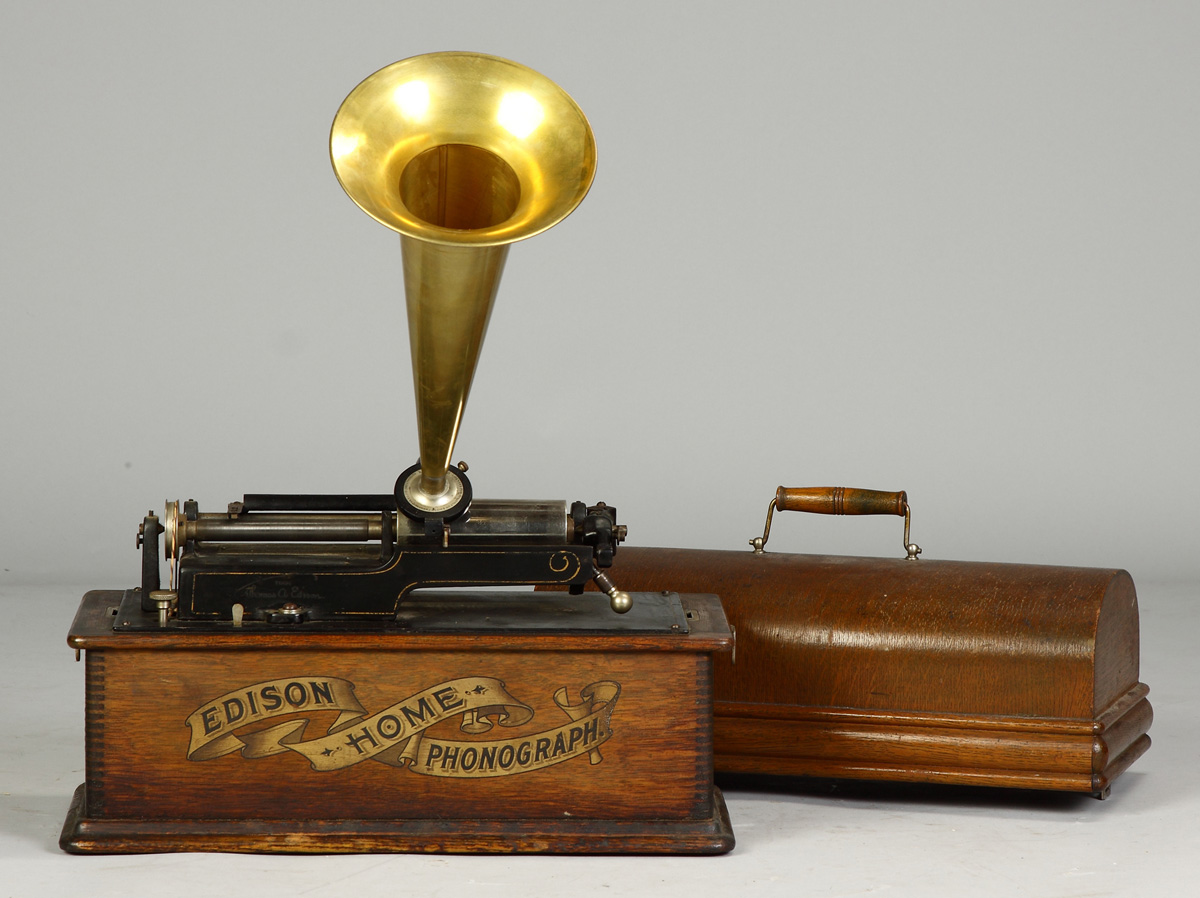
The Acoustic Era
Edison invented his phonograph in 1896, using wax at first and after a few years, using celluloid, the wax usually 2 minutes, and the celluloid 4 minutes, although there were some 4-minute wax cylinders.
Watch and listen to a 2-minute wax cylinder being played on my 1896 Edison Model D Phonograph.
A reflection of our culture at that time is Edison's first wax cylinder catalog, issued in 1898. The first cylinder listed on page one is one of several showing the level of prejudice toward black people.
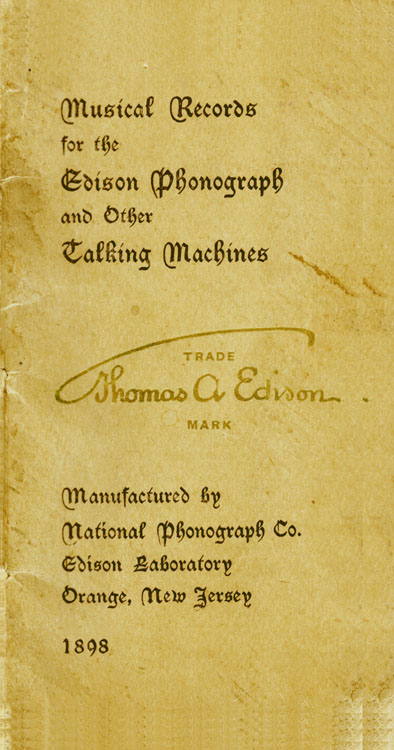
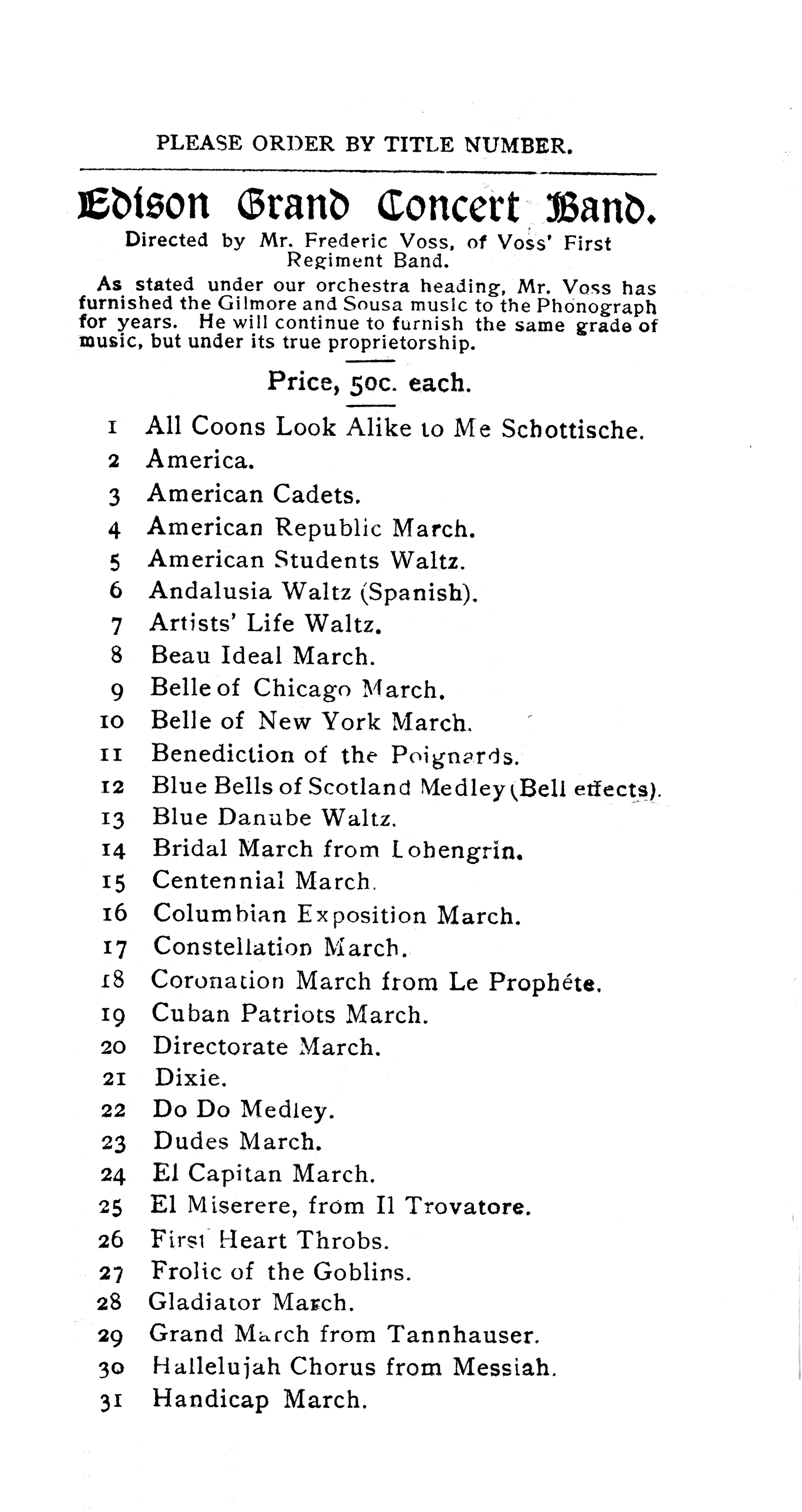
Unlike Victor phonographs, introduced later, Edison’s stylus was either sapphire (early ones) or diamond (all later ones), and for Edison’s machines, the recordings were made with the stylus moving vertically up and down to form the grooves, using a recording head with a cutting stylus. The same cylinder can then be played on the machine by using a regular head with a playing stylus. Victor machines had the metal stylus needles (that wore out quickly) moving back and forth in the groove. By 1904, Edison was able to make a master with a gold mold and manufacture the wax cylinders much more easily than having the artists repeat the performance. Celluloid cylinders were all made with a master and a mold.
Today’s lesson on Edison’s phonograph.
This "lesson" utilizes an Edison AMBEROLA 50 Phonograph, which has a diamond stylus and molded celluloid cylinders that play for 4 minutes. Edison instroduced this machine in 1912, and the cylinder I use was recorded that year.
Below is the Blue Amberol catalog, with a table of contents, showing the kinds of music recorded onto the cylinders from 1912 to about 1928, when they stopped making cylinders, and flat records became dominant.
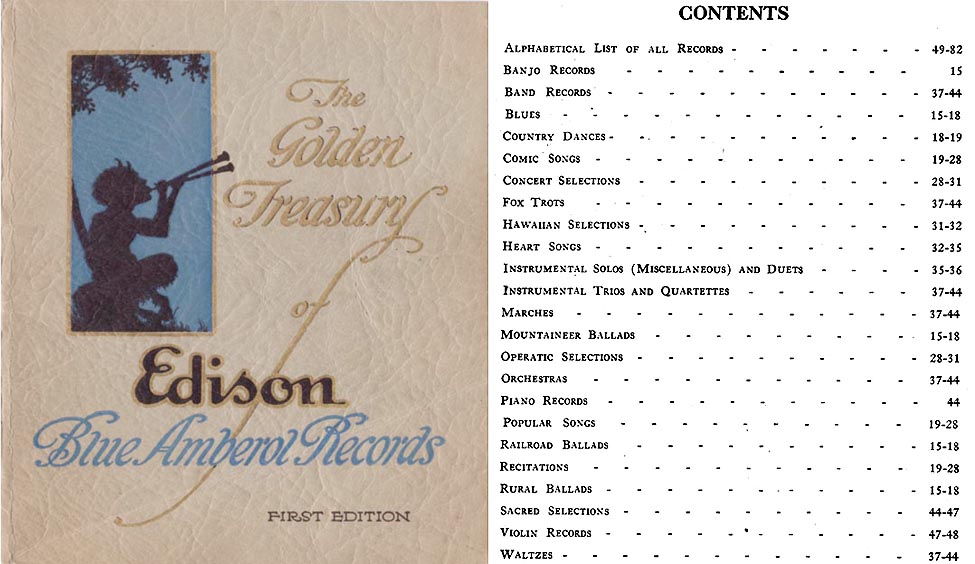
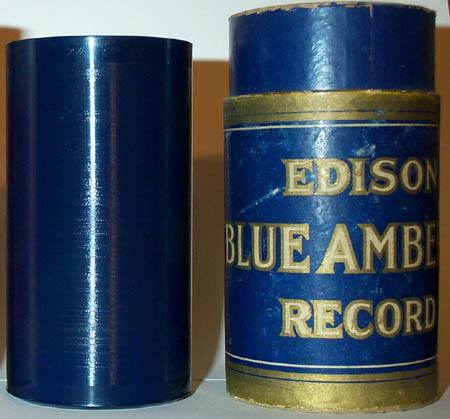
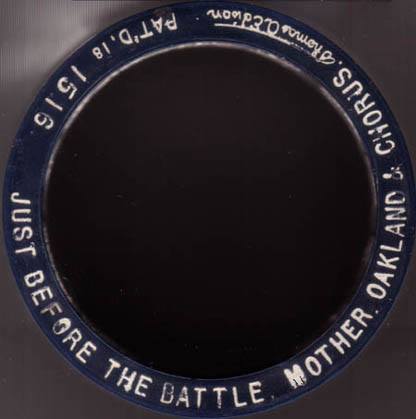
Here is one of my favorite cylinders being played on my Model 50.
I placed one of my cylinders, BA 1516, Just Before the Battle Mother, onto my scanner and scanned a very small part of the cylinder at 2400 dpi. Because the surface is curved, I could only secure a tiny section, 7.75 mm along the grooves. The 4-minute cylinder has a recorded surface that is precisely 8.88 cm long, and its diameter is precisely 5.52 cm.
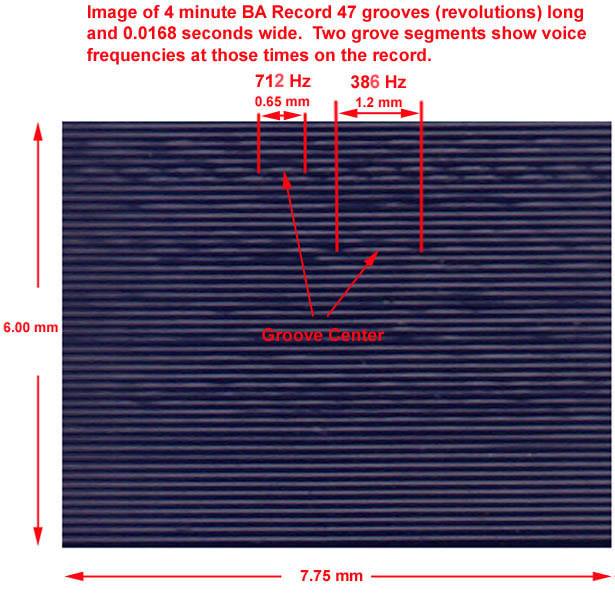
Since C = Pi x D, the distance around the cylinder for one revolution is 17.342 cm. My scan showed 47 grooves in 6.00 mm along the cylinder. So the grooves are separated from each other by 0.1277 mm. Since the recorded surface is 88.8 mm long, it must have had 88.8/0.1277 grooves, or 695 grooves. And of course, this means 695 revolutions. Recorded at 160 rev/min means 4.34 minutes for this particular cylinder.
Examining the scan carefully, you can see the troughs and crests of the recorded groove. What I have labeled “Groove Center” is a crest of a wave. The dark regions at each end of a groove center are troughs of the wave. And from crest to crest or from trough to trough is the wavelength of the sound that was recorded, in this case part of the performer's voice.
Now, how do we find the frequency of the wave for these locations on the cylinder? Since the circumference (i.e., one revolution) is 17.342 cm, and each revolution requires 1/160 minutes, or 0.00625 minutes, or 0.375 seconds, the time for one cm along the groove must be 0.375/17.342 seconds/cm, or 0.0216 seconds/cm, or 0.00216 seconds/mm.
You can see the shortest distance from trough to trough that I measured, i.e., one wavelength, was 0.65 mm. So his voice must have produced a sound with a period, T, of 0.00140 seconds. Frequency is 1/T, so the frequency had to be 712 Hz, a very high note.
Human Voice Frequency Range
| Human Voice | Frequency Range in Hz |
|---|---|
| Bass | 87 – 349 |
| Baritone | 98 – 392 |
| Tenor | 130 – 494 |
| Contralto | 131 – 698 |
| Soprano | 247 – 1,175 |
If you listen to the recording, you will hear those high notes.
Notice that in another location, I measured trough to trough at 1.20 mm. Using the same type of calculation, I found the frequency to be 386 Hz, almost an octave lower.
Listen to it here: